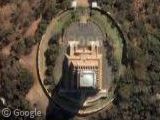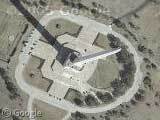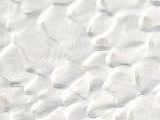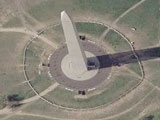Voortrekker Monument
Friday, 18th November 2005 by James Turnbull
The Voortrekker Monument was built in honour of the Voortrekkers (Pioneers), who left the Cape Colony in their thousands between 1835 and 1854. The monument was inaugurated on 16 December 1949, the anniversary of the "Battle of Blood River", and was designed so that the noon sun on that day would cast a ray of light onto the "Shrine of Honour". The day is now a public holiday named "Day of Reconciliation", to represent the hope for reconciliation between different racial groups after the end of Apartheid.
In 1949 a large amphitheatre was also erected to the North East of the Monument, which seats approximately 20,000 people.
Thanks: Carl & Dean





Hi there.
Just thought that I would add that another amazing feature of the monument is that the battle is engraved on the interior walls , really amazing.
William
The “battle is engraved on the interior walls” is called a frieze, and is the second largest of its kind in the world. More info and pictures of the interior of the Voortrekker Monument can be found on this page
Large Type at an airfield north of the town (should I suggest it for the “Large Type” category?): View Placemark
I think you have the date wrong. The Voortrekker monument was inaugurated on 16 December 1938, the 100th anniversary of the Battle of Blood River.
Graham,
According to this page the first cornerstone was laid in 1938 but the monument wasn’t inaugurated until 1949.
Quote: “The Building is constructed in such a way that just on the 16th of December at 12 noon a ray of sunlight falls onto the Shrine of Honour in the Heroes’ Hall. It bears the inscription: “Ons vir jou, Zuid Afrika!” (We for you, South Africa!).”
On the day of Atonement the High Priest would enter into the Holy of Holies in the Temple of Israel (Hebrews 9:7). This 10th day of the 7th month was the autumnal equinox when the sun rose exactly in the east and set exactly in the west. As the High Priest entered beyond the veil of the Holy of Holies, the sun’s rays following behind him was the light unto his path. (Refer I.Velikovsky – Worlds in Collision, published 1950 by Abacus)
Just an interesting similarity.
For posterity’s sake: My father Frank A. DiCarlo then an ex Italian POW was a cement and stone mason who worked on the wagons circling the Voortrekker Monument in the late nineteen forties. He emmigrated from SA to the United States in 1950 and was a General Foreman for DIC Underhill Concrete for the next twenty five years. A significant number of apartment buildings in New York City were built under his supervision.